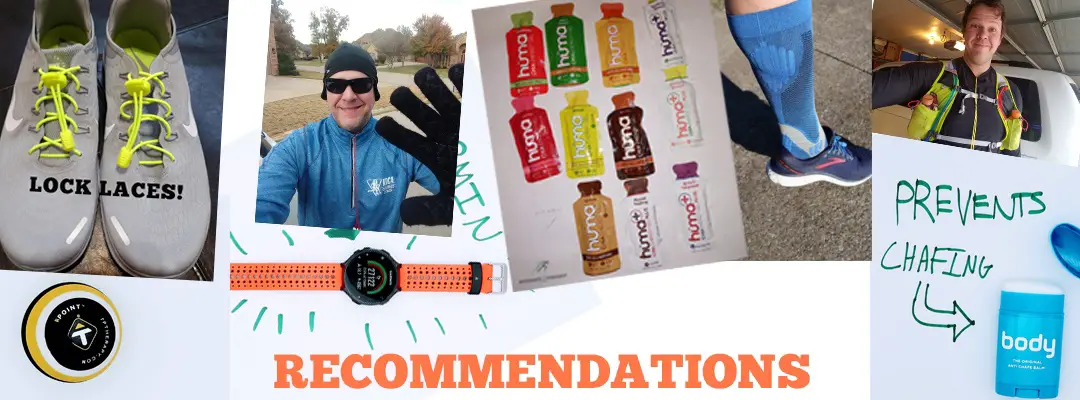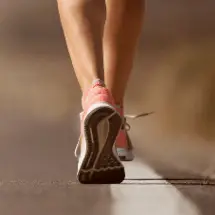What is the run-walk method?
The run-walk method is a form of interval training targeted to help people either to start running or to help them prepare for and then subsequently get through long marathon training. The entire training exercise allows for strategic walk breaks between running, to allow beginners to control fatigue, eliminate the risk of any serious injuries and prolong their workout, to build endurance.
There are different aspects of this method of training to consider, to take into account, and analyze: weigh the pros and cons, how to start training, the right run-to-walk ratio, and its impact on experts and novices alike. Let’s get started.
Run-Walk Method: A History
Who invented this method of interval training, you ask?
Back in the early 1970s, 1973 to be precise, an American runner named Jeff Galloway, who represented the United States in the 1972 Munich Olympics, formulated this method and called it the run-walk-run method. Known for being a coach, first and foremost, he intended to use this method to help inexperienced runners or those who were just starting out.
How does the run-walk method work?
What this method does is formulate and give you this strategy, one that will allow you to make use of a running-to-walk ratio and optimize on maximum running time, while simultaneously managing your fatigue. This method is not just a form of interval training, it is a tool to help you reduce your fatigue when running.
By allowing yourself to walk for X amount of time for every Y minutes you run, you can offset the running time with a shorter period to walk, and build up your energy to put into your next bout of running.
Why are walking breaks necessary?
You might wonder why it is important to offset your running with a few minutes of walking. This walking doesn’t refer to a lazy stroll; it is, rather a way to prepare your system to anticipate the following activity of running.
According to Galloway, people are inherently capable of walking for long periods before they get tired, as opposed to running which results in a physical jolt to the system: lifting your body off the ground, absorbing the impact upon landing, and even how you move your hands when you’re running can wear you down quickly.
Related: What Happens To Your Body When You Walk More?
Related: Why Do I Feel Tired After I Run (besides exerting energy)?
How to incorporate the walk time
The walking time should be used to let your body recover from the physical strain of running. Over time, it gets easier, which is exactly what this method intends to do.
Galloway advises runners to first understand when their body begins to show signs of fatigue: is it at the 3-minute mark? 5? 6?
Once you know, he suggests you start the walking part of this method just before that fatigue creeps in. This way you don’t waste your walk-time trying to catch your breath from overdoing it during the running time, and instead focus on controlling your breathing, and regulating your pace.
For beginners
If you are an absolute beginner, start running for 10 to 20 seconds and then walk for two to three minutes. Continue this ratio till you believe you can increase the running time. Slowly add 10 seconds of running after every six to seven run-walk-run successions, but without increasing your walking time.
When you can comfortably run for 30 seconds, slowly reduce your walking time by 10, then 20, and finally 30 seconds. Remember that you don’t and shouldn’t do all that in just one day of running. Pace yourself out and increase your running to walking ratio over a few days.

What is the best run-walk ratio?
Again, this would depend on every individual, their level of skill, how fit they are, and how much stamina they have. As a beginner, you start at the bottom rung of the ladder. You run for 20- 30 seconds and you walk for 1-2 minutes.
For veterans, a higher running time, followed by a shorter amount of time to walk might be all that’s necessary. The intermediaries on the other hand have a little more room to figure out what their optimal run-to-walk ratio is.
A good ratio to start with is 4:8. Run for 4 minutes straight and walk for eight minutes. This would be a one-on-two-off system. A One-on Two-off system is one part running and two parts walking. An example would be running for two minutes followed by walking for four minutes – repeated. Slowly tweak your running time, without decreasing your walk time.
When you feel like you can run for your allotted time without wanting to keel over, and you feel brave enough to do it, reduce your walking time, 30 seconds at a time. See this example:
Related: Walking To Lose Weight- Ultimate Guide
Sample 8 week run/walk training schedule
- 1st Week – run/walk 3 to 4 times a week – (Run 4 minutes – Walk 8 minutes) x 3 for each day
- 2nd Week – run/walk 3 to 4 times a week – (Run 4 minutes – Walk 7 minutes 30 seconds) x 3 for each day
- 3rd Week – run/walk 3 to 4 times a week – (Run 4 minutes – Walk 7 minutes) x 3 for each day
- 4th Week – run/walk 3 to 4 times a week – (Run 4 minutes – Walk 6 minutes 30 seconds) x 3 for each day
- 5th Week – run/walk 3 to 4 times a week – (Run 4 minutes – Walk 6 minutes) x 3 for each day
- 6th Week – run/walk 3 to 4 times a week – (Run 4 minutes – Walk 5 minutes 30 seconds) x 3 for each day
- 7th Week – run/walk 3 to 4 times a week – (Run 4 minutes – Walk 5 minutes) x 3 for each day
- 8th Week – run/walk 3 to 4 times a week – (Run 4 minutes – Walk 4 minutes 30 seconds) x 3 for each day
At this point, you can slowly start to raise your running minutes by 15 or 30-second increments. Or keep lowering your walking time by 30-second increments. The way you tweak your walk/run and run/walk intervals is based on your goals. If you want to be able to run 1 mile without stopping, then you’ll want to keep lowering your walking until it’s around 15 to 30 seconds for the walking interval. I’ve already built a free plan that transforms an out-of-shape person into being able to run 1 mile over 9 weeks (check it out below):
How To Run 1 Mile When You’re Out Of Shape
The ideal run-walk ratio is what you make of it. As long as you get the training and exercise you need from your running session, you set the pace.
How To Setup Run Walk On Your Garmin 235
Related: Check out my YouTube Video on How To Set Run-Walk Intervals With Your Garmin 235
Subscribe to my youtube channel below!
Pros and Cons of the run-walk method
Pros
- It allows you to regulate and control your levels of fatigue.
- It will help you build endurance.
- Every time you finish a run and start walking, this cooling-out time will allow your body to release and store endorphins. You’ll feel good and then, you’ll get back to the running part invigorated.
- The risk of sustaining serious injuries is greatly diminished. Any aches, pains, and cramps, too will reduce and you will recover faster.
- Psychologically, thinking about running for any blocks of time can be intimidating and will cause physical as well as mental stress to your system. This method will allow you to break it up into manageable parts. It will no longer loom over you, but instead be something to look forward to and make you feel good(thank you, endorphins).
Cons
- It might be difficult for you to initially time yourself. It will seem like you’re spending more time checking your timer or watch rather than running. But you will eventually find a system that works for you. Consider investing in an armband, or running pants with a flip belt around the waist, or plain old pocketed pants to carry your phone or beeper in rather than having to hold on to it. The best choice is to use some type of GPS running watch with run-walk alerts. I put together a review of best-running watches for runners (click here)
- You are more at risk of dropping your phone than actually falling yourself. That being said, any form of exercise can bring about related injuries. Running in particular, when your body is moving faster than usual, can cause injuries and falls. So always be careful, especially in uneven terrains. Do not ignore the weather, either.
Can you lose weight with the run-walk method?
Any form of exercise, especially when you do it regularly will help with losing weight. With the walk-run method, you can help boost your weight loss by increasing the number of calories you burn daily.
Over time, when you run-walk-run daily, you will slowly build lean muscle mass, and lose fat in your body. You will find that your stamina increases, as will your metabolism. Add a balanced and controlled diet to your fitness and wellness regime and what you have is a sure way to lay off those pounds in a healthy way, and keep them off the more you run-walk-run.
Beginner Runner Resources
For more free-running resources for new runners check out the FAQ I put together for new runners:
Beginner’s Guide To Running FAQ
| Help support me and subscribe to my YouTube channel. YouTube video - 30 ways to make your runs less painful! Coach Scott's Credentials:
|
To sign up for a FREE half marathon training schedule, log sheet, and pace predictor CLICK HERE.

Recommended gear for runners
Connect with me:
| facebook.com/BeginnerToFinisher/ |
References
https://www.therunnerbeans.com/run-walk-method-for-running-a-marathon/



Although I have been running for YEARS, this pandemic (mostly through my fault) has really reduced my running fitness. I plan to restart my running program using this method.